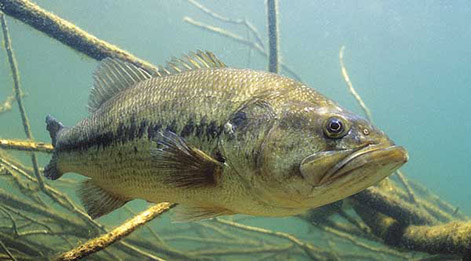Evaluation of habitat enhancement structure use by spotted bass in natural and experimental streams
Investigator: 
Stanley L. Proboszcz, M.S. Student
Project Supervisor:
Dr. Christopher S. Guy
Funding:
Kansas Department of Wildlife, Parks,
and Tourism
Cooperators:
Kansas Department of Wildlife, Parks, and Tourism
Kansas State University
Location:
Otter Creek, Kansas
Completion:
2003
Status: Completed
Objectives:
The objectives of this study were to evaluate use of half-log, rootwad structure, and LUNKERS (little underwater neighborhood keeper encompassing rheotactic salmonids), by adult and juvenile spotted bass in natural and experimental streams.
Results:
A common method used to enhance salmonid populations is to improve lotic habitat by installing habitat enhancement structures. However, the effects of enhancement structures have not been evaluated for spotted bass Micropterus punctulatus. The objectives of this study were to evaluate use of half-log, rootwad structure, and LUNKERS (little underwater neighborhood keeper encompassing rheotactic salmonids), by adult and juvenile spotted bass in natural and experimental streams. Enhancement structures were installed in Otter Creek, Kansas. Adult spotted bass use of natural and enhancement structure was documented weekly during summer and fall of 2001 and 2002 using radiotelemetry. Mean home range size ws 3,158 m2 (SE = 705 m2). Selection ratios were high for enhancement structures (half-log = 21.8; LUNKERS = 4.2; rootwad structure = 1.1) and did not differ significantly from natural structure. Habitat use by juvenile spotted bass and the influence of a predator (flathead catfish Pylodictis olivaris) were evaluated in an experimental stream. Juvenile spotted bass used enhancement structures similarly to the field study. For example, half-log had the highest selection ratio (2.1) and no structure (an empty position) had the lowest (0.1). Mean velocity available was not significantly different among half-log, rootwad structure, and LUNKERS; however, half-log and rootwad structure differed from no structure. Mean light intensity available was lowest for half-log and differed significantly from no structure and rootwad. Flathead catfish position had not significant effect on spotted bass habitat selection. These results indicate that juvenile spotted bass habitat use is a function of low velocity and low light intensity. In addition, half-log is the most appropriate structure to use for spotted bass lotic restoration projects and would likely benefit both juvenile and adult fish in Kansas streams.
Products:
Thesis or Dissertation:
Proboszcz, S.L. (M.S., 2003; advisor Guy) Evaluation of habitat enhancement structure use by spotted bass in natural and experimental streams. Master's Thesis, Division of Biology, Kansas State University.
Peer-reviewed and Scientific Publications:
Proboszcz, S.L. and Guy, C.S., 2006. Evaluation of Habitat Enhancement Structure Use by Spotted Bass. Prairie Naturalist, 38(4), pp. 223-238.